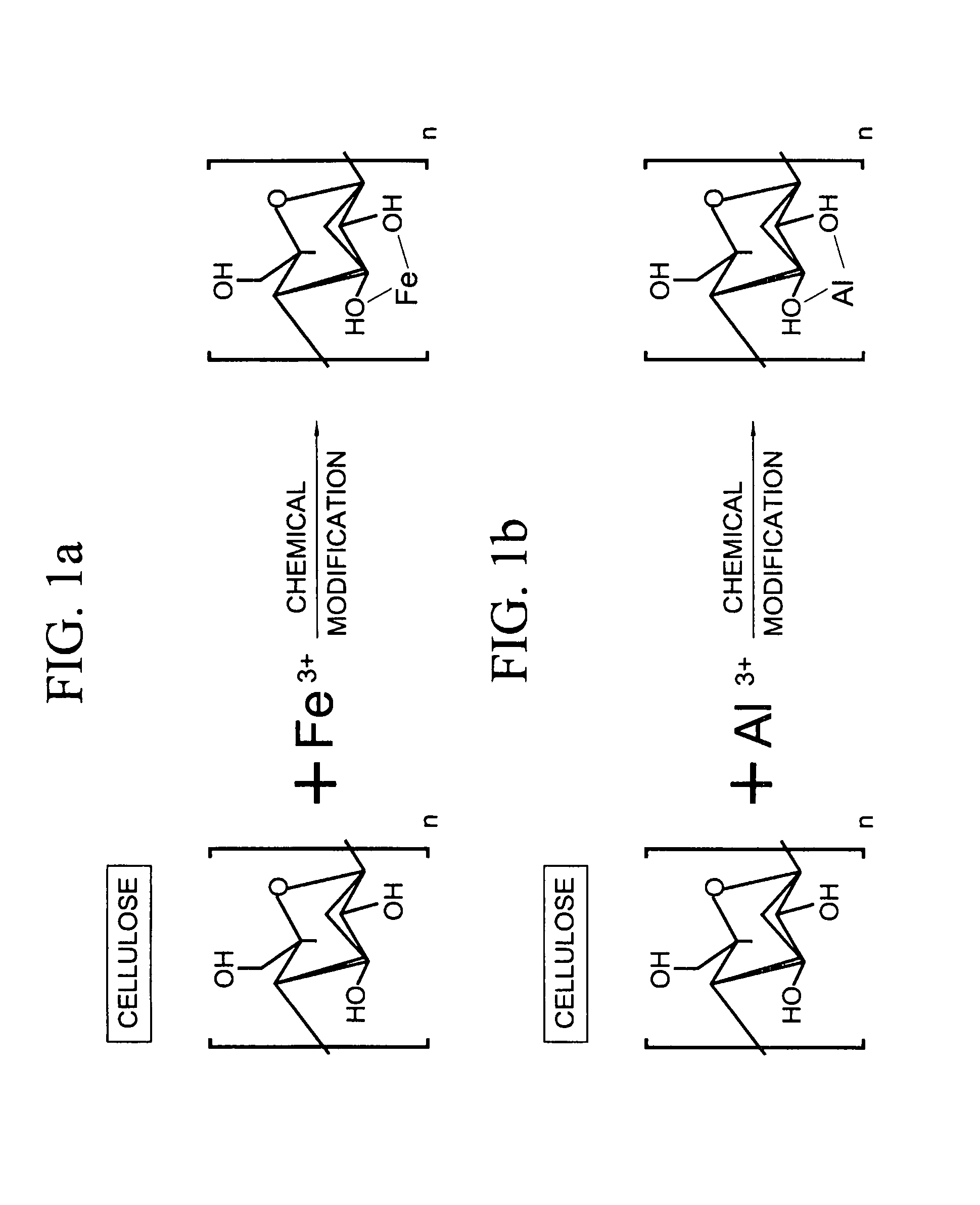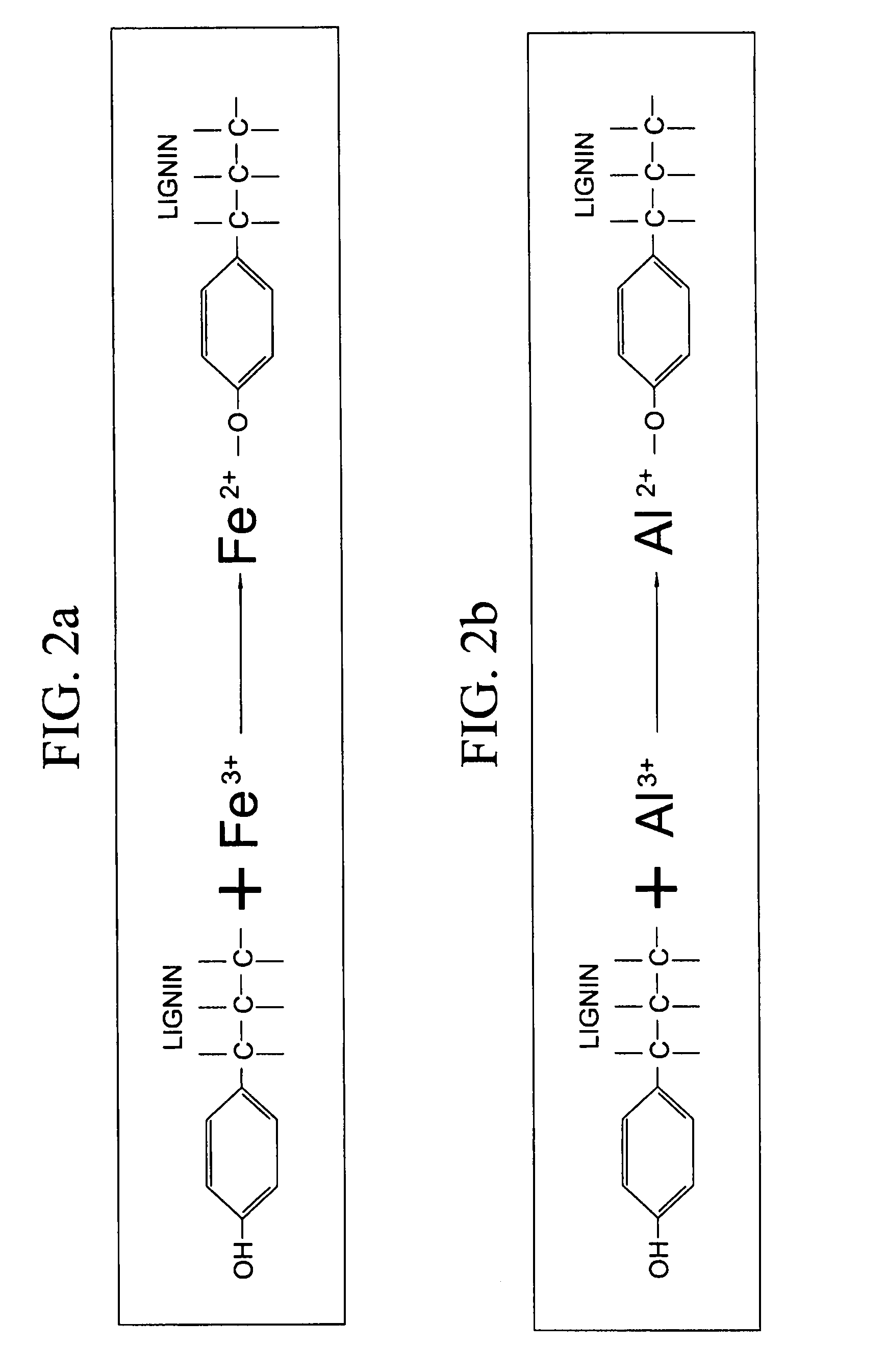Lignocellulose-based anion-adsorbing medium (LAM) and process for making and using same for the selective removal of phosphate and arsenic anionic contaminants from aqueous solutions
a technology of anion adsorption and lignocellulose, which is applied in the direction of separation process, quary waste water treatment, other chemical processes, etc., can solve the problems of significant environmental and health problems, undesirable biological effects, and the threat to human health and life of animals, plants, and humans when consumed with arsenic in groundwater and mine wastewater, so as to reduce the content of anionic contaminants
- Summary
- Abstract
- Description
- Claims
- Application Information
AI Technical Summary
Benefits of technology
Problems solved by technology
Method used
Image
Examples
examples
[0055]The process for manufacturing LAM (Fe form) from nonpelletized lignocellulose was optimized as follows. Aqueous solutions of FeCl3 ranging in concentration from 0.01 to 3.0 M were prepared. These solutions were adjusted to HCl concentrations ranging from 0.1 to 1.0 N. 170 mg paper (25×25×1 mm) was added to each solution and incubated for 0.1 2.0 hours. Paper samples were removed from these solutions and dried. Dried paper samples were then fixed with 1.0 8.0 M NH4OH for 0.1 10 minutes, after which the unreacted Fe was removed by rinsing with water. Vacuum treatments were employed during cation loading and fixation incubations.
[0056]The manufacture of LAM (Fe form) from pelletized lignocellulose was optimized as described above. The pelletized lignocellulose media consisted of a sheet of paper tightly rolled and glued into the form of a stick with a diameter of 2 mm and then cut into 5 mm long segments of about 30 mg each. The rest of the experiment is the same as described abo...
PUM
| Property | Measurement | Unit |
|---|---|---|
| molar concentration | aaaaa | aaaaa |
| diameter | aaaaa | aaaaa |
| diameter | aaaaa | aaaaa |
Abstract
Description
Claims
Application Information
 Login to View More
Login to View More - R&D
- Intellectual Property
- Life Sciences
- Materials
- Tech Scout
- Unparalleled Data Quality
- Higher Quality Content
- 60% Fewer Hallucinations
Browse by: Latest US Patents, China's latest patents, Technical Efficacy Thesaurus, Application Domain, Technology Topic, Popular Technical Reports.
© 2025 PatSnap. All rights reserved.Legal|Privacy policy|Modern Slavery Act Transparency Statement|Sitemap|About US| Contact US: help@patsnap.com



